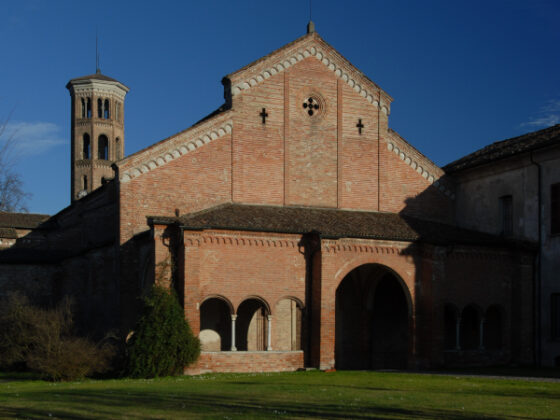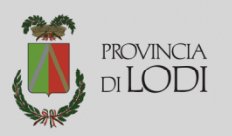21. SS Peter and Paul Abbey
21. SS Peter and Paul Abbey
- Telephone: 339 5638080
- Address: Abbadia Cerreto
Built by Cistercian monks over pre-existing foundations in 1084, it stands out as an example of Lombard Cistercian architecture and marks the shift from the Romanic style to the Gothic style. The surface of the church has a chromatic quality to it; a simple line and a rational measure of the space that are already clear from the very façade, adorned with a three-span portico divided by buttresses.
The Abbey prospered throughout the Middle Ages, until, at the verge of the modern age, it lost its pivotal role in the economy that the monks had imposed upon it. It was only thanks to abbot commendatory Federico Cesi that the abbey recovered from a state of neglect. In 1542 abbot Cesi promoted a complete reformation of the abbey, and intervened also on the monastery and church’s architectural elements. Probably at the end of the works Cesi commissioned the magnificent Cesi altarpiece to the famous painter Callisto Piazza.
The painting portrays the “Virgin with the baby Jesus, the saints and the patron Federico Cesi”; it is among the most significant works in the painter’s maturity. Callisto’s altarpiece is also the first important pictorial work in the abbey, which until then had been lacking any kind of adornment. In 1798 the abbey was closed and the monks deserted the Cerreto.

Built by Cistercian monks over pre-existing foundations in 1084, it stands out as an example of Lombard Cistercian architecture and marks the shift from the Romanic style to the Gothic style. The surface of the church has a chromatic quality to it; a simple line and a rational measure of the space that are already clear from the very façade, adorned with a three-span portico divided by buttresses.
The Abbey prospered throughout the Middle Ages, until, at the verge of the modern age, it lost its pivotal role in the economy that the monks had imposed upon it. It was only thanks to abbot commendatory Federico Cesi that the abbey recovered from a state of neglect. In 1542 abbot Cesi promoted a complete reformation of the abbey, and intervened also on the monastery and church’s architectural elements. Probably at the end of the works Cesi commissioned the magnificent Cesi altarpiece to the famous painter Callisto Piazza.
The painting portrays the “Virgin with the baby Jesus, the saints and the patron Federico Cesi”; it is among the most significant works in the painter’s maturity. Callisto’s altarpiece is also the first important pictorial work in the abbey, which until then had been lacking any kind of adornment. In 1798 the abbey was closed and the monks deserted the Cerreto.


